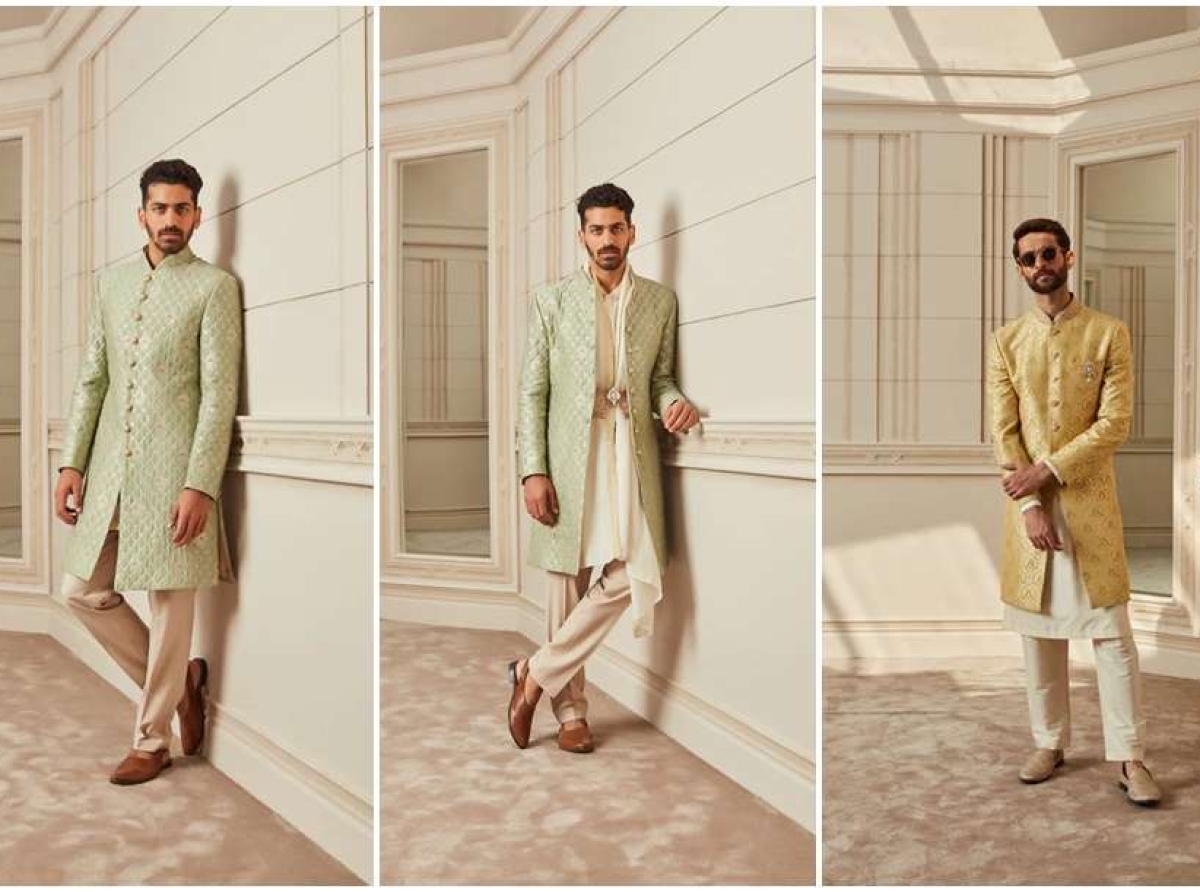2024: Sherwanis with swagger, Indian men embrace the "Metrosexual Maharaja" trend

08 January 2024, Mumbai
WHY India
Gone are the days when Indian men's ethnic wear was relegated to dusty shelves, pulled out only for weddings and festivals.
In 2023, the market witnessed a revolution, transforming itself into a vibrant, dynamic space driven by fashion-conscious men, bold experimentation, and a surge in national pride.
As designer Kunal Rawal aptly quips, "The Indian man is finally shedding his inhibitions and embracing his cultural heritage through his wardrobe."
Let's delve into the key trends, successes, and challenges that marked this evolution, along with a glimpse into what 2024 holds:
The Rise of the Metrosexual Maharaja:
- Market Boom: According to Technavio, the Indian ethnic wear market reached a whopping USD 18.68 billion in 2023, growing at a CAGR of 8%. Rising disposable income, a burgeoning middle class, and a surge in fashion consciousness among Indian men, particularly in Tier 2 and 3 cities, fueled this growth.
- Trendsetting Designs: Brands like Tasva ,Manyavar, Sabyasachi, Manish Malhotra, and Rajesh Pratap Singh led the charge with exquisite fusion wear, blending traditional silhouettes with contemporary cuts and fabrics. Nehru jackets with floral prints, sherwanis in linen blends, and kurta-pant combinations with bold colors became must-haves. As designer Tarun Tahiliani affirms, "Fusion is the future of ethnic wear."
- Celebrity Endorsements: Bollywood A-listers like Ranveer Singh and Ayushmann Khurrana donned ethnic wear on red carpets and in movies, normalizing it for everyday use and influencing fashion choices across demographics.
Beyond the Big Names:
- The Indie Surge: A wave of young, independent designers like Kunal Rawal and Shantanu & Nikhil emerged, catering to niche segments with experimental designs and sustainable practices. They leveraged social media platforms like Instagram to build loyal followings and bypass traditional retail channels.
- Regional Flavors: Local brands like Chennai Silks and FabIndia adapted regional weaves and styles to a national audience, showcasing the rich tapestry of Indian textiles. This fostered cultural appreciation and inclusivity within the market.
Challenges and the Road Ahead:
- Counterfeiting: The rampant proliferation of imitations and cheaper alternatives posed a major challenge to genuine brands struggling to maintain quality and price points.
- Limited Online Presence: Many smaller players lacked the resources for robust e-commerce platforms, hindering their reach and potential.
- Sustainability Concerns: The environmental impact of textile production remained a pressing issue, demanding more eco-conscious practices from brands and consumers alike. As actor Ayushmann Khurrana, a vocal advocate for eco-conscious fashion, emphasizes, "Sustainability is not just a trend, it's a responsibility."
2024: A Canvas of Possibilities:
- Tech-driven Retail: Virtual try-on tools and AR/VR experiences are expected to enhance online shopping, bridging the gap between physical and digital stores.
- Hyper-personalization: AI-powered platforms will recommend outfits based on individual preferences and body types, creating a more bespoke shopping experience.
- Sustainable Solutions: Increased adoption of organic fabrics, upcycling initiatives, and responsible manufacturing practices will be crucial for long-term growth.
Going forward
In 2024, the Indian men's ethnic wear market stands poised for even greater heights.
With a clear focus on innovation, inclusivity, and sustainability, it's a story set to be woven with vibrant threads of tradition and modern flair, echoing Ramnik Taluja, CEO of Manyavar, who declares, "The Indian man is no longer shy about expressing his personality through his attire."

















